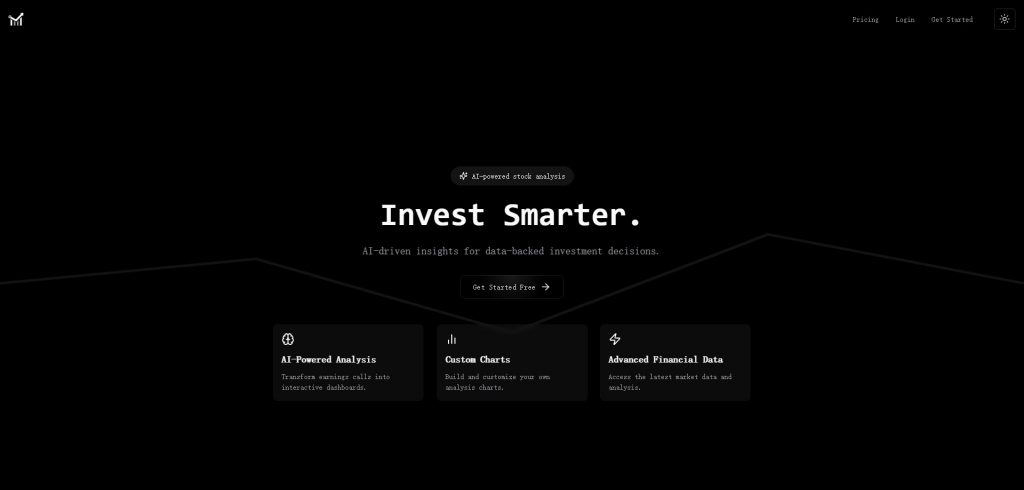20 Free Facts For Deciding On Best Ai copyright
20 Free Facts For Deciding On Best Ai copyright
Blog Article
Top 10 Tips For Automating Trading And Regular Monitoring Ai Stock Trading, From Penny To copyright
It is important to automate your trading and monitor it regularly especially in fast-moving stock markets like penny stocks and copyright. Here are ten tips to help you automate your trades, and ensure ongoing performance by regularly monitoring.
1. Clear Trading Goals
Tip: Identify your trading goals, which include the risk tolerance, expected returns, and asset preferences.
The reason: Clear goals will guide the selection of AI algorithms, risk management rules, and trading strategy.
2. Trade AI using reliable platforms
Tips - Select AI trading platforms that allow full integration and automation to your broker or exchange. Examples include:
For Penny Stocks: MetaTrader, QuantConnect, Alpaca.
For copyright: 3Commas, Cryptohopper, TradeSanta.
The reason: A robust platform that has strong capabilities for execution is crucial to automated success.
3. The focus is on Customizable Trading Algorithms
Tips: Design or modify your trading algorithms to fit your strategy.
The reason: Customized algorithms ensure that the strategy is in line to your personal style of trading regardless of whether you're focusing on penny stocks or copyright.
4. Automate Risk Management
Install risk-management tools for automated use like stop-loss orders, trailing-stops, and take profit levels.
The reason: These security measures protect your investment portfolio from massive losses, especially when markets are volatile, such as penny stocks and copyright.
5. Backtest Strategies Before Automation
Before going live, test your automated system on previous data to gauge performance.
What is the reason? Backtesting allows you to try out the strategy and determine if it has potential. This helps reduce the chance of losing money on live markets.
6. Regularly Monitor Performance and Adjust the settings
Even though trading is automatic, it's important to monitor the performance of your trading regularly to identify any issues.
What to Monitor What to Track: Slippage, profit loss and whether algorithm is aligned with market conditions.
The reason: a continuous monitoring process lets you adjust your strategy in the moment when market conditions alter. It is then possible to be sure that your plan remains effective.
7. Flexible Algorithms - Apply them
Tips: Select AI tools that adapt to market conditions that change by altering the parameters of trading in real-time based on data.
Why? Markets change constantly, and adaptive algorithms are able to optimize strategies to manage penny stocks and copyright in order to align them with new trends or volatility.
8. Avoid Over-Optimization (Overfitting)
Over-optimizing a system can result in overfitting. (The system is able to perform well on backtests but badly under actual conditions.
The reason is that overfitting reduces the strategies generalization to future market conditions.
9. AI can spot market anomalies
Tips: Make use of AI to monitor abnormal market patterns or other anomalies in the data (e.g. sudden increases in trading volume news sentiment, stock market volatility, or the activity of copyright whales).
The reason: Being aware of these signals early can assist you in making adjustments to automated strategies prior to a major market move happens.
10. Integrate AI with Regular Alerts and Notifications
Tip: Set real-time alerts to be alerted of important market events such as trading executions, or any changes in algorithm performance.
The reason: Alerts keep you up to date on critical market movements, and allow quick manual interventions if needed (especially volatile markets like copyright).
Bonus Cloud-Based Solutions: Use them for Scalability
Tip: Use cloud-based platforms to increase the speed and scalability of your strategy. You can also use multiple strategies simultaneously.
Cloud solutions are essential for your trading system because they permit it to work 24/7 with no interruption, and especially in copyright markets that never shut down.
Automating your trading strategies and monitoring your account on a regular basis can allow you to take advantage of AI-powered stock trading and copyright to reduce risk and enhance performance. Read the recommended copyright ai for site examples including ai day trading, coincheckup, ai trading platform, ai copyright trading, ai for investing, ai investing, ai for stock trading, stock analysis app, copyright ai trading, trading bots for stocks and more. 
Top 10 Tips For Leveraging Ai Backtesting Tools For Stock Pickers And Predictions
Backtesting is an effective tool that can be utilized to improve AI stock selection, investment strategies and forecasts. Backtesting allows you to see the way that AI-driven strategies have been performing under the conditions of previous market cycles and gives insight into their effectiveness. Backtesting is an excellent tool for stock pickers using AI or investment prediction instruments. Here are ten suggestions to make the most out of it.
1. Use historical data with high-quality
Tips. Be sure that you are making use of accurate and complete historical information such as stock prices, trading volumes and reports on earnings, dividends or other financial indicators.
The reason: High-quality data guarantees that the backtest results are accurate to market conditions. Data that is incomplete or inaccurate can produce misleading backtests, affecting the accuracy and reliability of your plan.
2. Include Slippage and Trading Costs in your calculations.
Tips: When testing back, simulate realistic trading expenses such as commissions and transaction fees. Also, think about slippages.
The reason: Not accounting for slippage and trading costs could lead to an overestimation of the potential return of your AI model. Incorporate these elements to ensure that your backtest is more realistic to the actual trading scenario.
3. Test in Different Market Conditions
TIP Try out your AI stockpicker in multiple market conditions, including bull markets, periods of high volatility, financial crises or market corrections.
Why: AI algorithms can behave differently in various market conditions. Tests in different conditions will ensure that your plan is dependable and able to change with market cycles.
4. Use Walk Forward Testing
TIP: Make use of the walk-forward test. This is the process of testing the model using a sample of rolling historical data and then confirming it with data outside the sample.
Why: Walk forward testing is more secure than static backtesting when evaluating the performance of real-world AI models.
5. Ensure Proper Overfitting Prevention
Tips: To prevent overfitting, you should test the model by using different time periods. Be sure it doesn't create noises or anomalies based on the past data.
Overfitting occurs when a model is too closely tailored for historical data. It is less able to predict future market movements. A balanced model should be able to generalize across different market conditions.
6. Optimize Parameters During Backtesting
Use backtesting to optimize key parameters.
Why: Optimizing parameters can enhance AI model performance. It's important to make sure that optimizing doesn't cause overfitting.
7. Drawdown Analysis and Risk Management Incorporate them
Tip: Include risk management techniques like stop-losses, risk-to-reward ratios, and position sizing when backtesting to assess the strategy's ability to withstand large drawdowns.
How do you know? Effective risk management is key to ensuring long-term financial success. You can spot weaknesses by analyzing how your AI model handles risk. You can then adjust your strategy to achieve higher risk-adjusted returns.
8. Examine key Metrics beyond Returns
To maximize your return, focus on the key performance metrics, including Sharpe ratio and maximum loss, as well as win/loss ratio as well as volatility.
What are these metrics? They provide a better understanding of the returns of your AI's risk adjusted. If you solely rely on returns, you could ignore periods of extreme risk or volatility.
9. Explore different asset classes and strategies
TIP: Test the AI model by using different types of assets (e.g. ETFs, stocks and copyright) in addition to different investing strategies (e.g. momentum, mean-reversion or value investing).
The reason: Diversifying backtests across different asset classes allows you to test the adaptability of your AI model. This will ensure that it is able to be utilized across a range of markets and investment styles. It also assists in making to make the AI model be effective when it comes to high-risk investments such as cryptocurrencies.
10. Update Your backtesting regularly and improve the method
TIP: Always update the backtesting models with updated market information. This will ensure that the model is constantly updated to reflect the market's conditions, as well as AI models.
Why: Because the market changes constantly, so should your backtesting. Regular updates make sure that your AI models and backtests remain efficient, regardless of any new market or data.
Bonus: Use Monte Carlo Simulations for Risk Assessment
Tips : Monte Carlo models a large range of outcomes by running several simulations with different input scenarios.
The reason: Monte Carlo simulators provide greater insight into the risks in volatile markets such as copyright.
Follow these tips to evaluate and improve the performance of your AI Stock Picker. The process of backtesting will ensure that the strategies you employ to invest with AI are robust, reliable and able to change. Read the top rated linked here on best ai penny stocks for website advice including stock analysis app, ai trader, best ai stock trading bot free, artificial intelligence stocks, best copyright prediction site, ai for trading, trading ai, ai stock market, ai financial advisor, ai copyright trading bot and more.